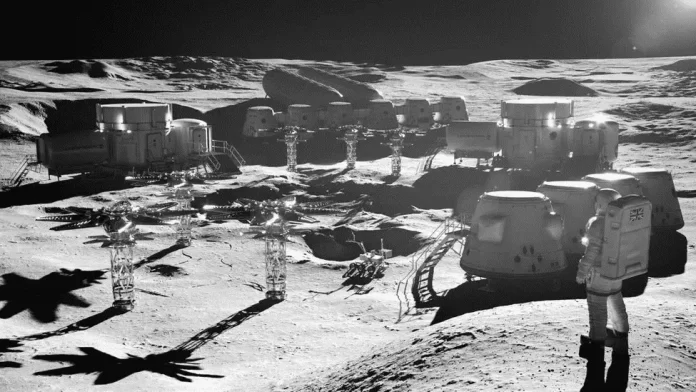In the realm of space exploration, Miniature Nuclear Fuel Cells, a groundbreaking development devised by scientists at Bangor University, promise to redefine the possibilities of lunar habitation. With these tiny yet immensely powerful energy sources, the dream of extended human presence on the Moon is no longer confined to science fiction. Join us on a journey through the latest advancements in space technology as we delve into how Miniature Nuclear Fuel Cells are poised to revolutionize lunar exploration and open doors to interplanetary travel.
In a significant development for space exploration, scientists have unveiled a groundbreaking energy source that could potentially enable astronauts to inhabit the Moon for extended periods. This achievement aligns with NASA’s ambitious Artemis Program, which aims to establish a lunar outpost by approximately 2030.
Researchers at Bangor University have designed miniature nuclear fuel cells, comparable in size to poppy seeds, with the capacity to generate the energy necessary for sustaining life on the lunar surface. Professor Simon Middleburgh, heading the project at the university, described the endeavor as a challenging yet exhilarating endeavor.
The Moon, often viewed as a stepping stone to Mars and beyond, possesses abundant resources crucial for modern technology. This advancement in energy generation could serve as a catalyst for interplanetary exploration.
As space technology progresses at an unprecedented pace, the BBC was granted exclusive access to the Bangor University Nuclear Futures Institute’s cutting-edge laboratory. The university’s research team, a global leader in fuel technology, collaborates with prominent partners such as Rolls Royce, the UK Space Agency, NASA, and the Los Alamos National Laboratory in the United States.
Professor Middleburgh, representing the Nuclear Futures Institute, expressed optimism about the imminent comprehensive testing of their nuclear fuel in the coming months.
The Moon’s surface experiences extreme temperatures, plunging as low as -248°C due to the absence of an atmosphere to regulate temperature. Bangor University plays a pivotal role in addressing the energy and heating requirements for sustaining life in this harsh environment.
Recently, the research team dispatched a diminutive nuclear fuel cell, known as a “Trisofuel,” to their collaborators for extensive testing. This Trisofuel cell could potentially power a micro nuclear generator, developed by Rolls Royce. The generator, comparable in size to a small car, is adaptable for use on spacecraft and rockets, furthering the goal of establishing a Moon base by 2030.
Professor Middleburgh emphasized the robustness of this technology, stating, “You can launch them into space, subjecting them to tremendous forces, and they will still operate safely when deployed on the Moon.”
In a related development, India achieved a historic milestone by landing its robotic probe, Chandrayaan-3, near the Moon’s south pole. One of the primary objectives of this mission is to locate water-based ice, a critical resource that could support human habitation on the Moon in the future.
Professor Middleburgh proudly noted that the work being conducted at Bangor University is gaining international recognition, effectively placing Wales on the global scientific map.
Furthermore, the university envisions potential applications for these micro generators on Earth, particularly in disaster-stricken areas where electricity supply has been disrupted.
The research team at Bangor is also engaged in the development of a nuclear propulsion system for rockets, led by Dr. Phylis Makurunje. This innovative technology promises to significantly reduce travel time to distant planets, with Dr. Makurunje stating, “With nuclear thermal propulsion, the journey to Mars could be reduced to approximately four to six months, compared to the current duration of nine months or more.”




















